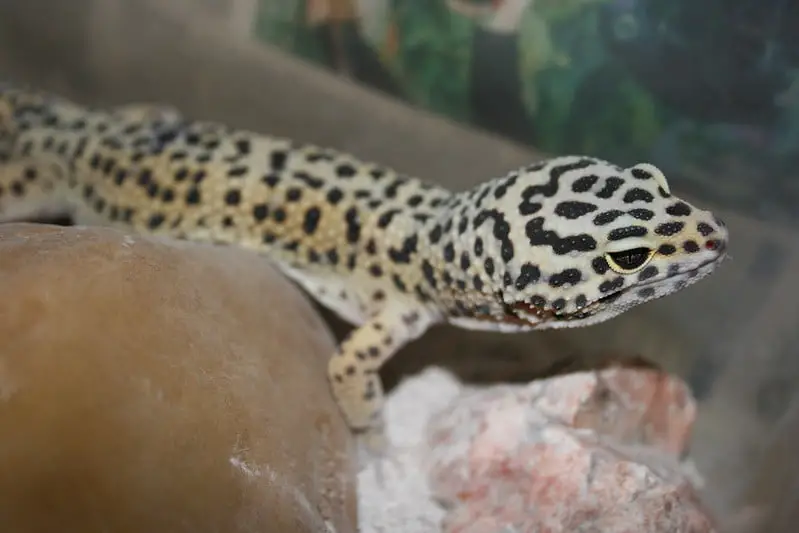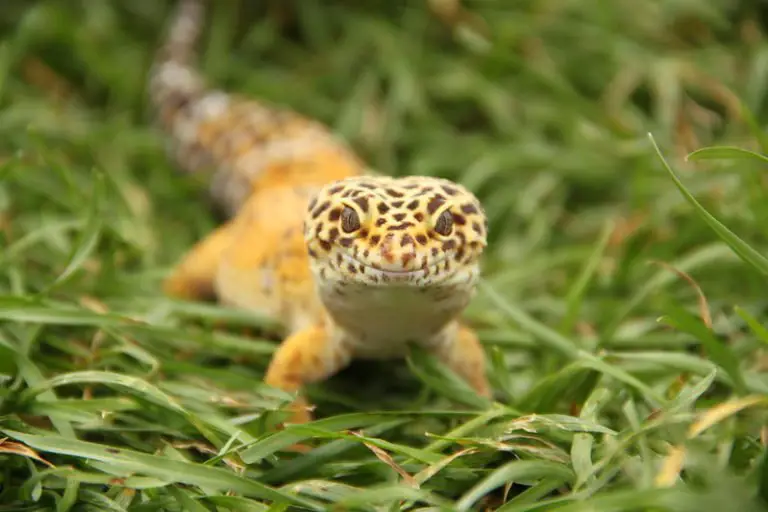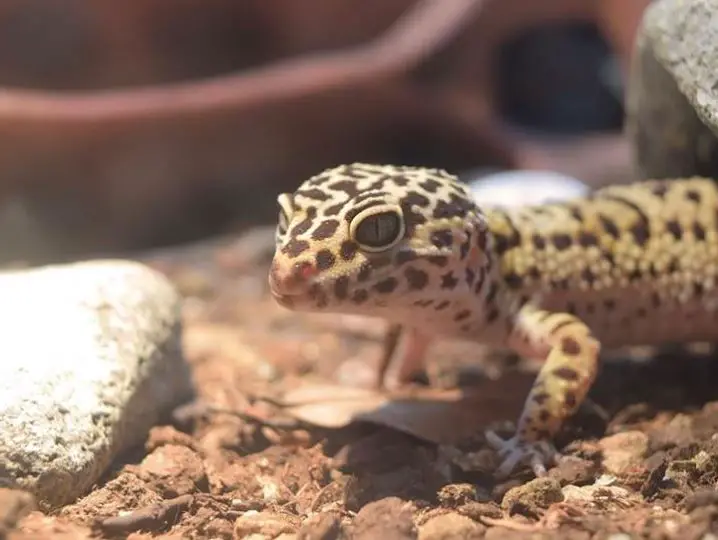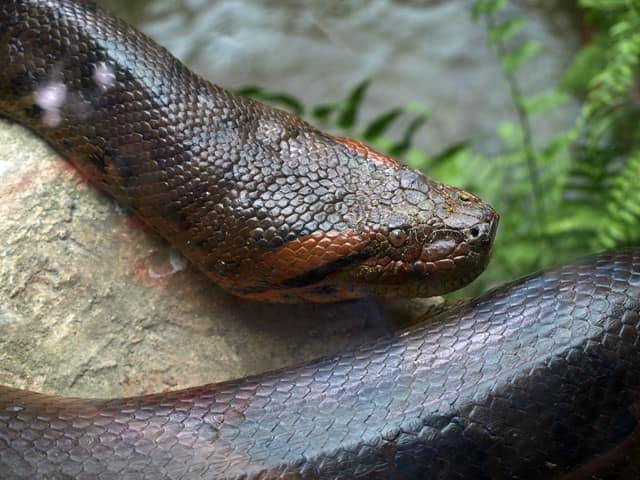What Happens if Your Leopard Gecko Gets too Hot?

As cold-blooded animals, Leopard Geckos need heat sources. This is the only way for their metabolism to work properly and be activated, eat and digest well.
There must be different temperature ranges in the terrarium so that the geckos can choose the right temperatures. Radiant heaters and heating mats are particularly suitable for this.
A thermometer is used to measure whether the temperatures are suitable. Thermostats can help adjust the temperature.
But what if for some reason the leopard gecko gets too hot?
Keeping temperatures too low is one of the main causes of illness. Missing, too weak, too far mounted or too short burning heat sources make it impossible for the animals to reach their “operating temperature”. The consequences are, among other things, digestive disorders and a reduced immune defense, in the further course metabolic disorders and infectious diseases.
However, too much heat also has negative effects on the leopard gecko. Keeping temperatures too high during the day or at night leads to increased food intake and excessively rapid growth.
This is associated with an increased need for vitamins and minerals. If the need is not met, deficiencies such as rickets can occur . If there is no cool retreat for the leopard gecko, there is a risk of obesity , liver disease , abnormally accelerated growth and metabolic disorders.
How do you recognize temperature deficits?
The instinctive behavior of the animal provides important information.
If it lies under the heat lamp for a long time or preferably in the center of the light cone, it probably needs higher temperatures. In this case, the heat radiation should be increased.
On the other hand, if it regularly moves to the periphery, the temperature is probably too high. Here the heat radiation should be reduced. The same applies to heating mats or heating coils.
If an animal shows a lack of activity, reluctance to move, poor appetite, withdrawal behavior, digestive disorders or susceptibility to infectious diseases, this can indicate temperatures that are too low.
On the other hand, if it spends a lot of time in the shade or buries itself, runs restlessly, shows an excessive need for food, grows quickly and tends to become overweight , this can be a sign of excessively high temperatures.
Prevents metabolic disorders in the leopard gecko due to temperature changes
In subtropical and temperate zones, temperatures drop significantly at night, and so do metabolism and activity. In order to avoid metabolic disorders, all heat sources in the terrarium should therefore be switched off at night (using a timer).
The opposite applies to animals from tropical regions, where only slight temperature fluctuations occur. Here, the heating source often has to remain switched on at night.
The annual cycles should also be observed. Animals from temperate zones need several months of winter rest with complete abstinence from eating, animals from subtropical zones at least several weeks of rest with reduced heat and food. Simulated rainy or dry seasons may be required for reptiles from tropical zones.
The preferred temperature for Leopard Geckos is around 27°C, anything above this means stress.
A room in which a temperature of 30°C is reached is not suitable as a place for a leopard gecko terrarium. At such temperatures, all heat sources should be turned off as an immediate measure.
If the room is at 30°C, how hot is the terrarium? Above 40°C there is a great danger of death.
Determination of maximum and minimum temperatures for leopard gecko
A minimum-maximum thermometer is best for measuring air temperature. It should be placed where the animals usually stay, i.e. near the ground for floor dwellers and in the upper part of the terrarium for tree dwellers. Four measured values are particularly important:
- Air temperature during the day.
- Air temperature at night.
- Maximum temperature at the warmest part of the terrarium (the animal can reach)
- Lowest temperature at the coolest point (the animal can reach).
Infectious diseases and heat
The reaction of the fever is a defense mechanism of the ancient body against pathogenic microorganisms.
If their number or virulence exceeds a certain threshold, the brain increases the heat point. In mammals, body temperature increases automatically – they have fever.
As cold-blooded animals, leopard gecko are unable to do this. But they also show a fever reaction: The increased heat set point leads to a greater need for heat. The result: They seek out especially warm areas to warm up to the temperature of the fever.
However, this is usually not possible in the terrarium. Therefore, the terrarium owner has to intervene and increase the temperature in the sun or the heating area by several degrees.
The natural reaction to fever should definitely be encouraged because it not only shortens the duration of the illness but also significantly reduces the mortality rate.
Controls general room temperature
Leopard geckos are cold-blooded (poikilothermal) animals. This means that they are not able to produce the body heat they need for their metabolism, as the human body does, for example. Reptiles are therefore dependent on the ambient temperature.
Native lizards, for example, mainly use the radiation from sunlight and the warmth of the substrate (e.g. stones). As a result, warm spots must be created in the leopard gecko terrarium in which the animals can warm up.
This is best done using a radiant heater. During the day, the temperature in the terrarium should be around 28 ° C. In cooler areas, the temperature should be around 22 to 24 ° C.
The temperature under a radiant heater should be 35 to 40 ° C locally. In order to achieve this value, it is often useful not to place the heat source in the middle, but in the left or right third of your terrarium. This creates a good temperature gradient (see sketch below).
At night, the temperature is allowed to drop to room temperature (18 to 22 ° C). All heat sources are switched off at night. There are also very different models of radiant heaters. For example, you can use a normal heat spot or a halogen spotlight.
The right Watts depend on the room climate, the terrarium material, the size of the terrarium and the furniture. Since no universal recipe can be given, it is up to you to test the optimal strength before the leopard gecko move.
To do this, measure the temperatures in the various heat zones.
Precautions when using heat for your leopard gecko
Sun exposure can heat glass containers so much that life-threatening overheating threatens. Species-appropriate temperatures can be maintained much better if the terrarium is in an unsunned place.
During the height of summer there is a sometimes considerable temperature increase in living spaces. Life-threatening temperatures can quickly be reached in the terrarium.
Regular temperature measurements during the summer months help to identify possible overheating situations in good time. You should take countermeasures in good time through better ventilation, shading and inactivation of heating systems.
In the case of climbing or jumping species, heating lamps are always provided with a protective cage to prevent the animals from being burned .
In order to avoid overheating of the animals by heat lamps or heating mats, they must be given the opportunity to go to cooler areas. This is especially true in small terrariums.
In order to create a heat gradient, the heat lamp is therefore mounted as far as possible to the side of the terrarium. On the opposite, cooler side, there must be a shady shelter.
Improper use of heating mats or heated stones can easily lead to burns . Therefore, depending on the species kept, certain surface temperatures must not be exceeded.
To limit the temperature, use a thermostat or, alternatively, a digital timer that switches on and off in a regular cycle, e.g. switched on for 10 minutes and switched off for 30 minutes.
As a rule, the entire floor should not be heated, but only part of the terrarium.
Dark stones store more heat and thus heat up more than light stones. They too can therefore become the cause of burns .







